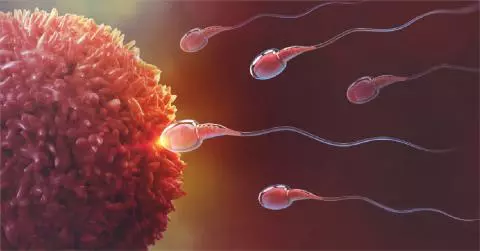Post-Ejaculation Urinalysis: A Diagnostic Tool for Male Fertility Issues

If you are trying to conceive with your partner but facing problems along the way, you or your partner might be experiencing infertility. Data suggests that about 30% of the couples who are experiencing infertility have male infertility and about 10% have infertility of both the sexes. This indicates the need to visit a skilled fertility specialist and get a comprehensive infertility evaluation done if you are having trouble in building your family.
Some of the most prominent causes of male infertility include low sperm count and quality. But there are other scenarios in which a male produces healthy sperm in adequate amount and still experiences infertility. Retrograde ejaculation is one such case.
Post-ejaculation urinalysis is a diagnostic test used to help identify the cause of male infertility for some individuals. This article explores what post-ejaculation urinalysis is, when it is used, and how it is done, among other things.
What Is Post-Ejaculation Urinalysis? What is Its Purpose?
Post-ejaculation urinalysis or PEU is a test performed to check the presence of sperm in the urine which is caused by a condition called retrograde ejaculation. In retrograde ejaculation, the semen flows back to the bladder instead of flowing out through the urinary meatus at the moment of ejaculation. This results in aspermia or no apparent ejaculation during sexual intercourse.
When is Post-Ejaculation Urinalysis Recommended?
PEU is usually recommended when a male urinates a cloudy urine after orgasm or little to no semen is released during ejaculation.
If a man is not able to impregnate his partner, then the doctor first recommends a sperm analysis. As per the findings of the sperm analysis report, if the person is affected by aspermia or no ejaculation so for confirmation the doctor performs a post-ejaculation urinalysis of the patient.
How is Post-Ejaculation Urinalysis Done?
Before performing the PEU on a patient, he is asked to come prepared in the following ways:
- Abstain from intercourse or ejaculation for 2 to 5 days before the PEU test
- Urinate without emptying the bladder completely.
- Wait for half-an-hour
- Masturbate and produce an ejaculation into the specimen container
- Soon after ejaculation, urinate and keep the sample in another sterile container containing culture medium
Both the samples containing the ejaculate and the urine post-ejaculation will be sent for a chemical, physical, and microscopic examination. The samples will be centrifuged, and the cells present in them will be precipitated. If the sperm cells are seen in the urine sample, then the patient will be diagnosed with retrograde ejaculation.
Retrograde ejaculation is one of the causes of male infertility and a post-ejaculation urinalysis can easily diagnose this condition. This could help the doctor to provide with proper medications and possible treatment options.
Summing Up!
Post-ejaculation urinalysis is an efficient diagnostic tool that is used to rule out or confirm retrograde ejaculation in a male experiencing infertility. It is usually recommended to people who have cloudy urine after orgasms. However, this simple test can diagnose the condition that causes infertility in several males.
PEU test helps in detecting retrograde ejaculation; if it is diagnosed in a timely manner, healthcare providers can recommend suitable treatment options and management strategies. This simple test can prove to be the first step of building your dream family with your partner.
If you think you might have retrograde ejaculation or are experiencing difficulty conceiving, visit your nearest Nova IVF Fertility centre and get a comprehensive evaluation done to understand the causes of your infertility. You can also book an appointment online by clicking www.novaivffertility.com to consult with our team of fertility experts.
 Infertility Counselling
Infertility Counselling Female Infertility Treatment
Female Infertility Treatment Andrology Treatment
Andrology Treatment Fertility Enhancing Surgeries - Female
Fertility Enhancing Surgeries - Female Fertility Enhancing Surgeries - Male
Fertility Enhancing Surgeries - Male Endoscopy Treatment
Endoscopy Treatment IUI Treatment
IUI Treatment IVF Treatment
IVF Treatment ICSI Treatment
ICSI Treatment Advanced IVF Solutions
Advanced IVF Solutions Embryology
Embryology Vitrification Egg, Embryo, Sperm Freezing
Vitrification Egg, Embryo, Sperm Freezing Preimplantation Genetic Testing (PGT)
Preimplantation Genetic Testing (PGT) Donation Program Embryo / Egg / Sperm
Donation Program Embryo / Egg / Sperm Self-cycleTM IVF
Self-cycleTM IVF

 Self-cycleTM IVF
Self-cycleTM IVF










